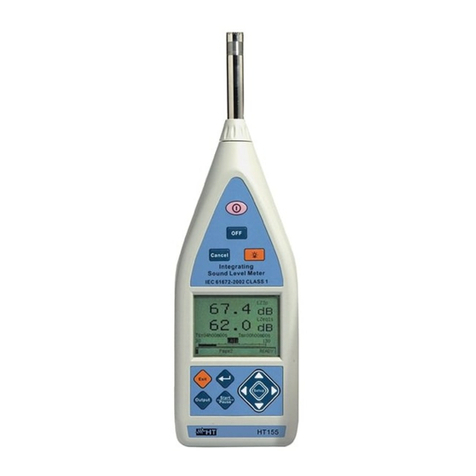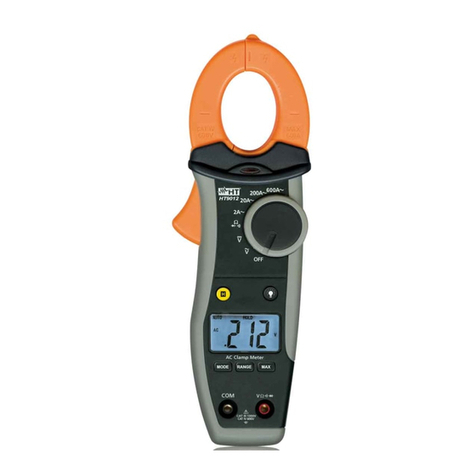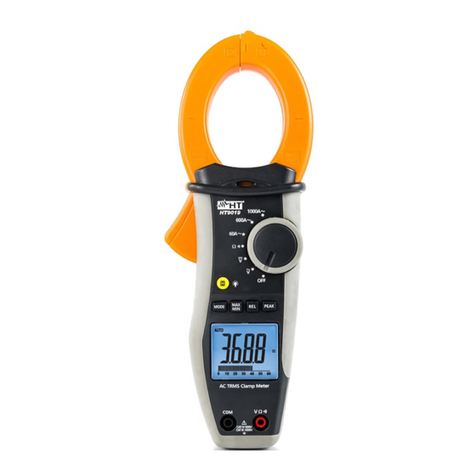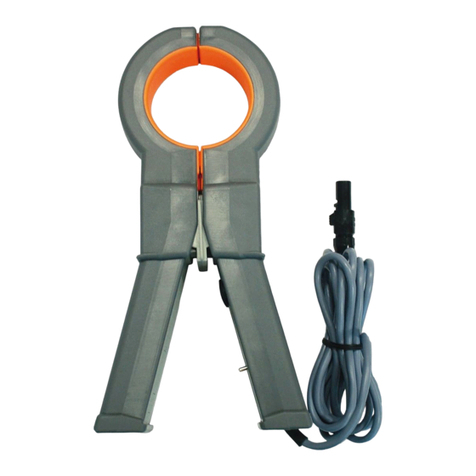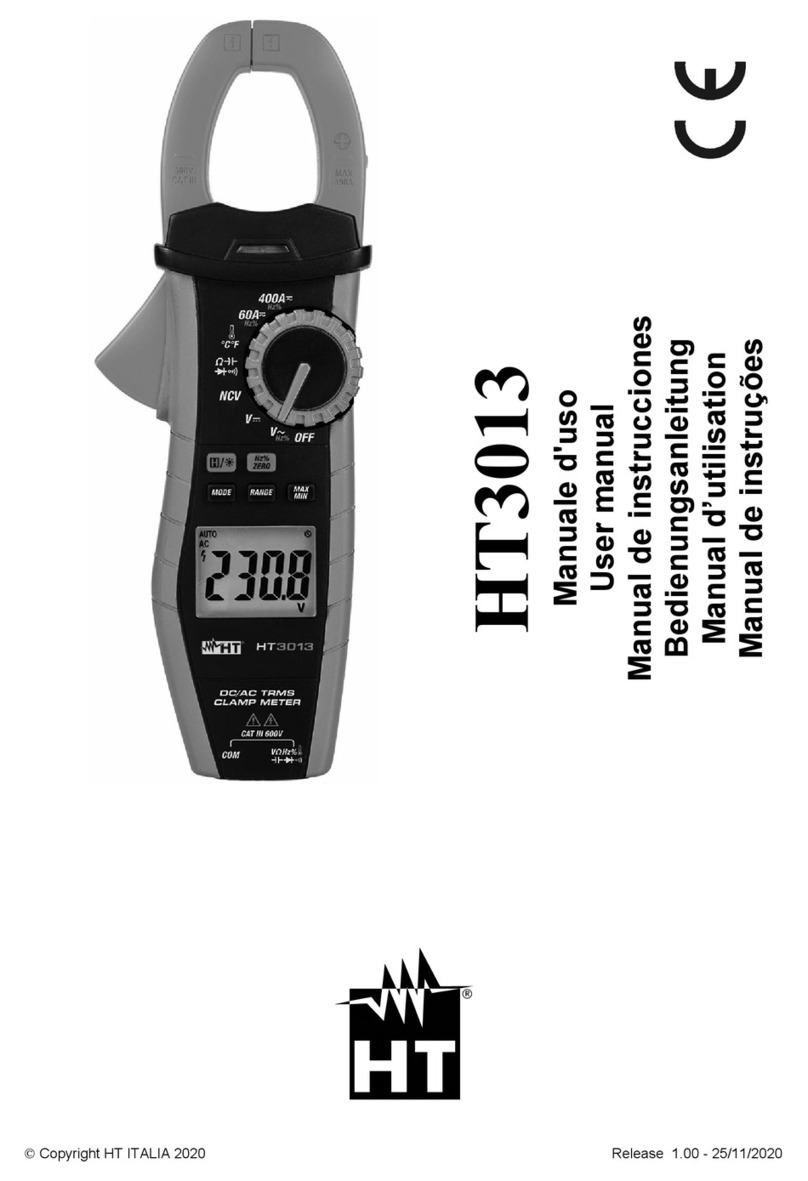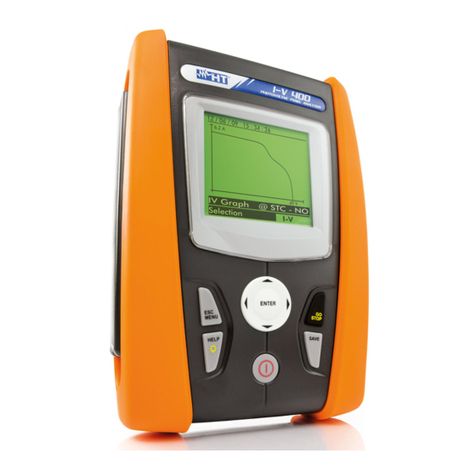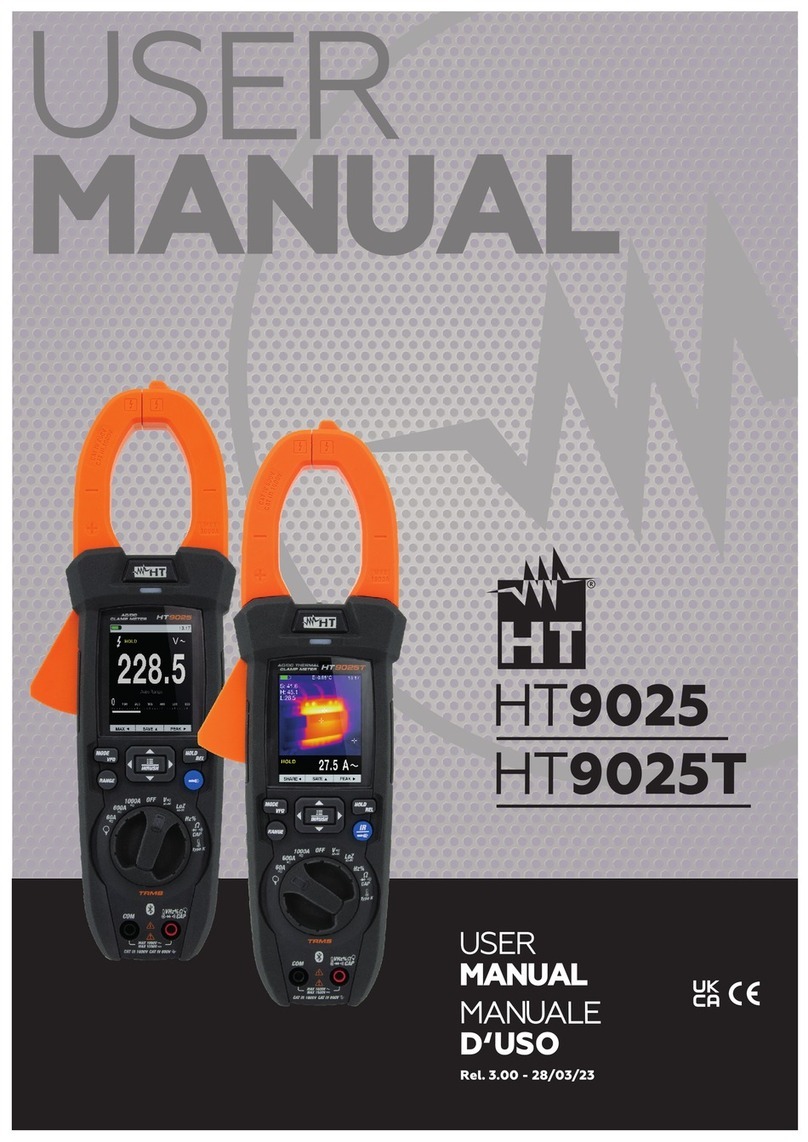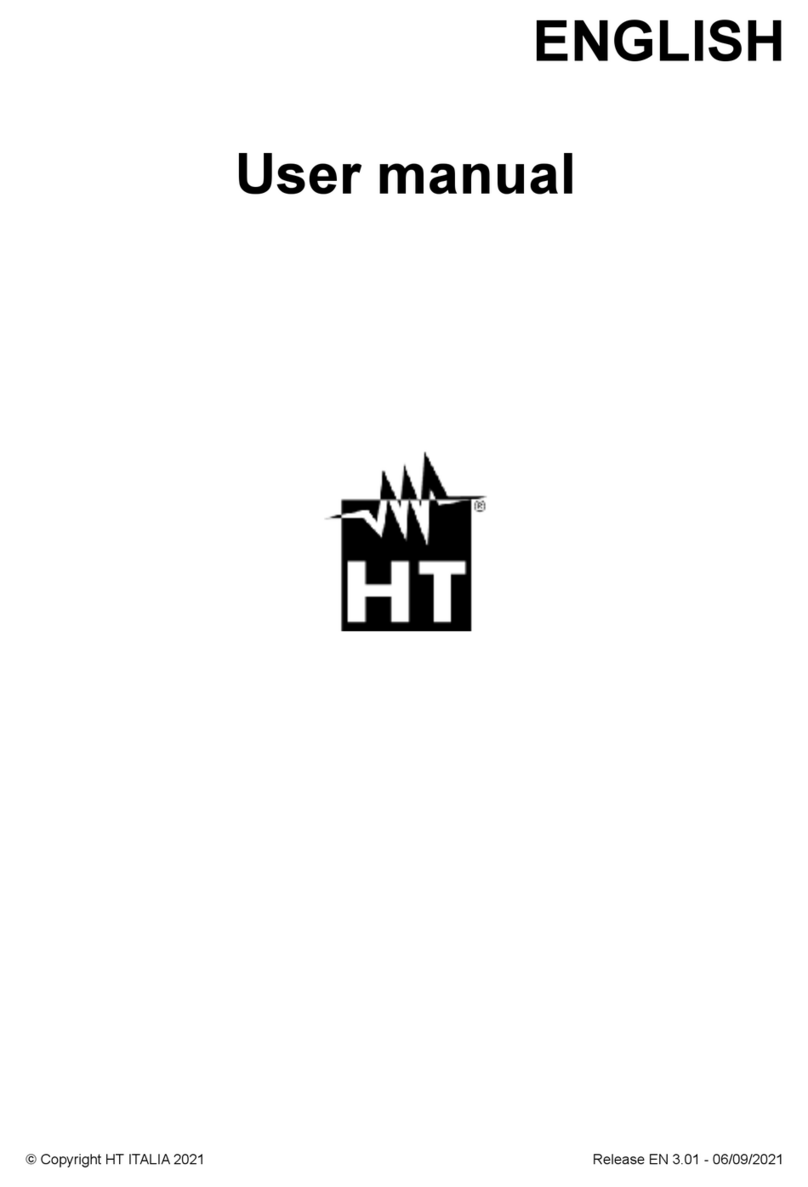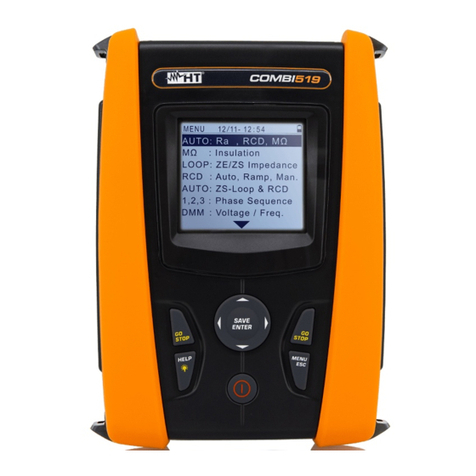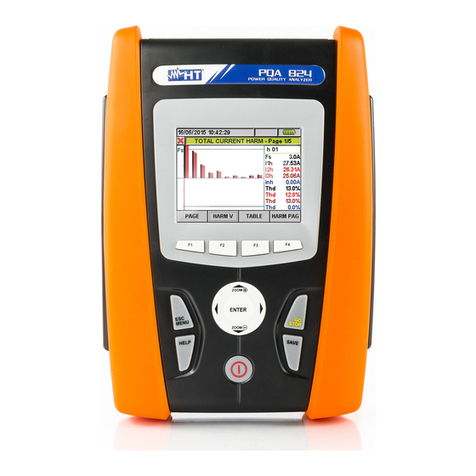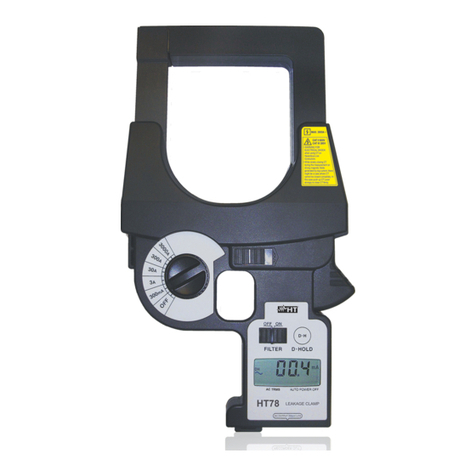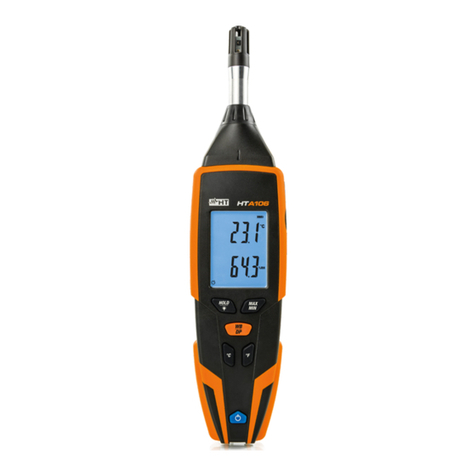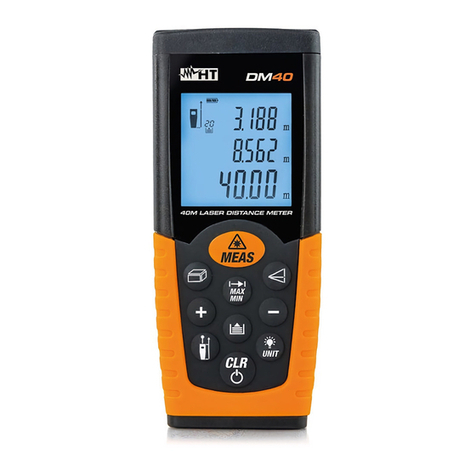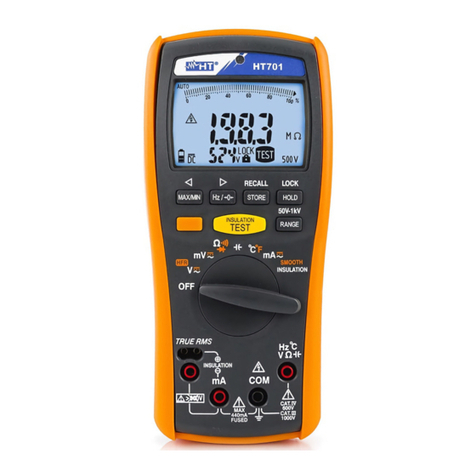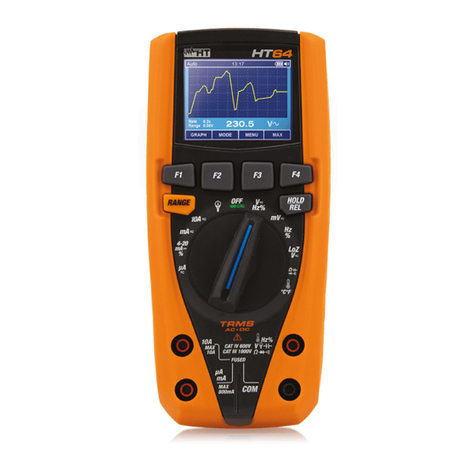
Rel. 2.00 - 09/11/226
VEGA74
PRIMA E DURANTE L’UTILIZZO
1.1
La preghiamo di leggere attentamente le raccomandazioni e le istruzioni
seguenti:
• Scollegare sempre i puntali di misura dal circuito in prova prima di cambiare
la funzione
• Quando lo strumento è connesso al circuito in esame non toccare mai qualsiasi
terminale inutilizzato
• Durante la misura di correnti, ogni altra corrente localizzata in prossimità delle
pinze può inuenzare la precisione della misura
• Durante la misura di corrente posizionare sempre il conduttore il più possibile
al centro del toroide in modo da ottenere una lettura più accurata
DOPO L’UTILIZZO
1.2
• Quando le misure sono terminate, spegnere lo strumento tramite il tasto ON/
OFF
• Se si prevede di non utilizzare lo strumento per un lungo periodo attenersi alle
prescrizioni relative all’immagazzinamento descritte al § 7
•
Per ogniinformazionedettagliata consultareil manuale d’usodello strumento
scaricabile dal sito www.ht-instruments.com/download
1.3
La norma "IEC/EN61010-1: Prescrizioni di sicurezza per apparecchi elettrici
di misura, controllo e per utilizzo in laboratorio, Parte 1: Prescrizioni generali",
denisce cosa si intenda per categoria di misura, comunemente chiamata
categoria di sovratensione. Al § 6.7.4: Circuiti di misura, essa recita:
I circuiti sono suddivisi nelle seguenti categorie di misura:
• La Categoria di misura IV serve per le misure eettuate su una sorgente di
un’installazione a bassa tensione.
Esempi sono costituiti da contatori elettrici e da misure sui dispositivi primari
di protezione dalle sovracorrenti e sulle unità di regolazione dell’ondulazione.
• La Categoria di misura III serve per le misure eettuate in installazioni
all’interno di edici.
Esempi sono costituiti da misure su pannelli di distribuzione, disgiuntori,
cablaggi, compresi i cavi, le barre, le scatole di giunzione, gli interruttori, le
prese di installazioni sse e gli apparecchi destinati all’impiego industriale e
altre apparecchiature, per esempio i motori ssi con collegamento ad impianto
sso
• La Categoria di misura II serve per le misure eettuate su circuiti collegati
direttamente all’installazione a bassa tensione
Esempi sono costituiti da misure su apparecchiature per uso domestico,
utensili portatili ed apparecchi similari.
• La Categoria di misura I serve per le misure eettuate su circuiti non collegati
direttamente alla RETE DI DISTRIBUZIONE.
Esempi sono costituiti da misure su non derivati dalla RETE e derivati dalla RETE
ma con protezione particolare (interna). In quest’ultimo caso le sollecitazioni
da transitori sono variabili, per questo motivo (OMISSIS) si richiede che l’utente
conosca la capacità di tenuta ai transitori dell’apparecchiatura.
ATTENZIONE












